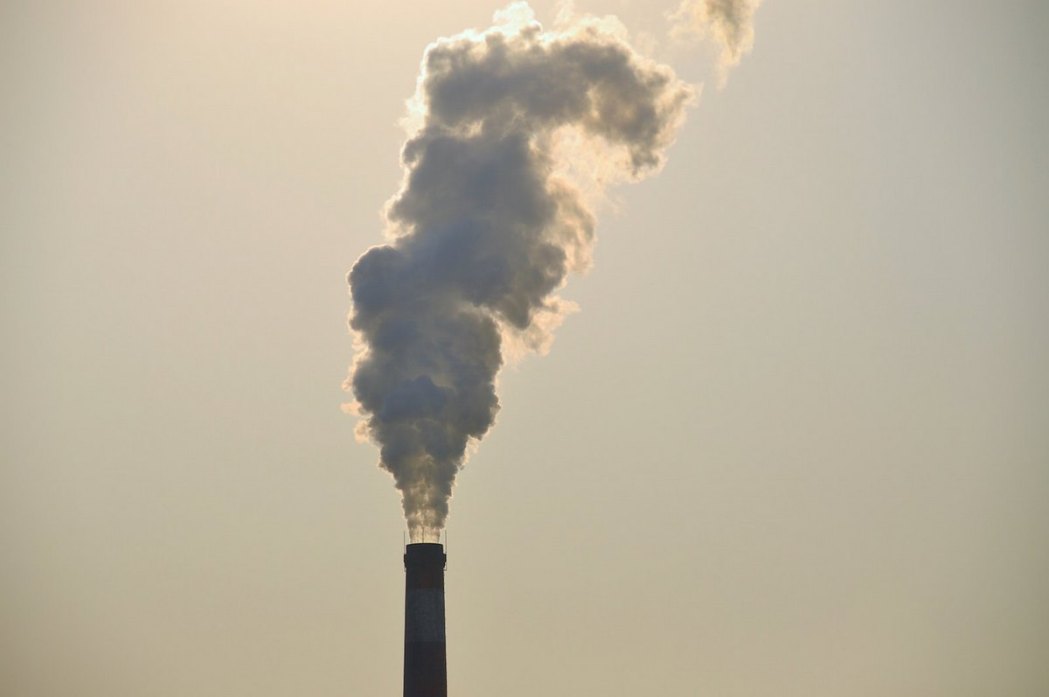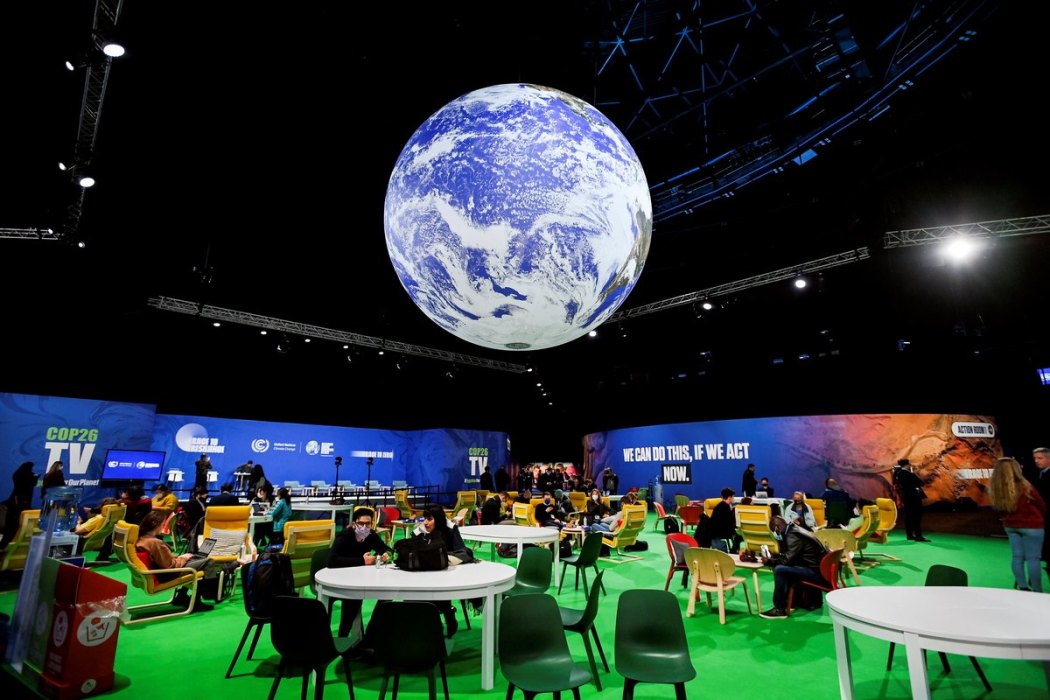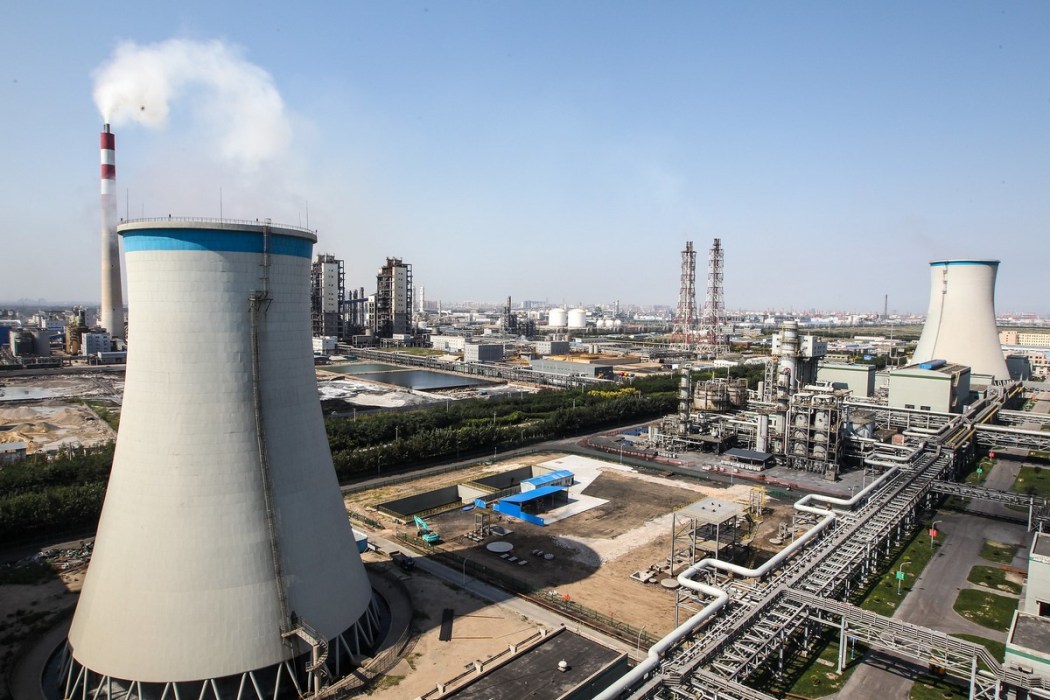The COP26 climate summit in Glasgow was supposed to be a breakthrough in climate diplomacy. In the event, it was a step in the right direction, but only a tiny one. The resulting agreement among governments – the Glasgow Climate Pact – does not avert the worsening climate crisis. Instead, it kicks the can down the road to the next climate summit, when we are supposed to expect a breakthrough, much as happened after dozens of previous climate summits over the last three decades.
Instead of declaring bold climate action, the Glasgow pact puts the goal of limiting global warming to 1.5 degrees Celsius on life support. The chair of COP26, the United Kingdom’s Alok Sharma, meekly declared at the close of the summit that the pact has “kept 1.5 within reach, but the pulse is weak.”

Even warming of 1.5 degrees Celsius will make life unbearable for countless people in the developing world. As things stand, if all of the pledges by governments at COP26 to limit greenhouse gas emissions are fully implemented – which they won’t be, if decades of climate diplomacy are any guide – global warming will surpass 2.5 degrees Celsius.
Let’s remind ourselves of the context for the Glasgow summit. Scientists tell us that greenhouse gas pollution must fall by nearly half globally by the end of this decade if there’s any chance of limiting global warming to 1.5 degrees Celsius, a point beyond which all hell will break loose: super storms, millennial droughts, rampant wildfires, unbearable heatwaves, rising (and dying) seas, and pestilence of catastrophic proportions that will bring suffering to billions and death to millions.
Nowadays, global greenhouse gas emissions are about 40 per cent higher than they were when governments first came together three decades ago to negotiate an agreement intended to lower them, thanks in very large part to the dramatic economic rise of China. Consequently, the Grim Reaper of climate change is wreaking havoc upon the world, and the pace of its march is accelerating as greenhouse gas pollution continues to rise. Meanwhile, climate diplomacy, as demonstrated by COP26, persistently moves at the pace of a toddler.

For those who take countries’ climate-related promises seriously (something that one could be forgiven for not doing, given experience), COP26 was not a total washout. Several countries strengthened pledges to limit their emissions and decarbonise their economies. That said, too few of the major emitters have concrete plans for making progress this decade.
Several side agreements were announced during the summit. Two dozen countries stated that they would stop building coal plants and stop financing their construction abroad. More than 100 countries pledged to reduce methane emissions 30 per cent by 2030. Even more countries declared their intentions to halt deforestation by 2030. A small group of countries – only about 5 per cent of those represented at COP26 – promised to phase out oil and natural gas production.
As for the Glasgow Climate Pact itself, many activists predicted before the summit that it would do little. Greta Thunberg, the young Swedish activist and instigator of the worldwide school strikes for climate action, anticipated that it would amount to “blah, blah, blah” – lots of talk, but not a lot of action. In contrast, Prime Minister Boris Johnson, the nominal host of the summit, described his “delight” with the pact and declared, despite contrary wording in the agreement, that it rang the “death knell for coal.” Australian Prime Minister Scott Morrison, whose country is a major coal producer and exporter, quickly declared exactly the opposite.

The reality of the pact’s value going forward is probably somewhere between empty words and the end of coal, although much closer to the former. United Nations Secretary-General, António Guterres – hardly an activist, but clearly someone greatly concerned about climate change – declared at the end of COP26 that the world is “still knocking on the door of climate catastrophe.”
The pact “resolves to pursue efforts to limit the temperature increase to 1.5 degrees,” although at the same time it “reaffirms” the goal of limiting it to “well below 2 degrees” (the latter being more realistic but justification for Guterres’s warning of climate catastrophe). The pact calls on countries to accelerate the “phase-down of unabated coal power and inefficient fossil fuel subsidies,” wording that is open to wide interpretation and amounts to going slow on cutting back on coal.
The pact also recognizes that protecting ecosystems must be an integral part of mitigating climate change. It notes agreement on rules to standardize the accounting of greenhouse gas emissions, limitations and trading (a boring topic for laypersons, to be sure, but one that has major importance because so many countries tend to cook the books when reporting their emissions).

The pact mentions that funding to help poor countries adapt to climate change is insufficient and “notes with deep regret” that financing to help those countries mitigate their emissions remains below what developed countries have promised for more than a decade. The pact “urges” developed countries to double their financial aid packages and calls on the private sector to do its part. Importantly, despite strident demands from poor countries, the pact failed to create a fund to pay reparations for the harm that they are experiencing due to climate change.
The Glasgow Climate Pact was hailed by some as a breakthrough because it is the first climate agreement to mention fossil fuels. That’s one way to interpret the first-time explicit reference to coal, but the pact says nothing about the rising production of, and demand for, oil and natural gas. Another interpretation is to see this belated reference to one fossil fuel as a devastating indictment of decades of climate summitry: it took 30 years before governments agreed to mention, let alone implement, the desirability of cutting back on the biggest cause of the climate crisis.
While the pact demonstrates growing concern around the world about climate change, and growing willingness to take action, it also showcases the enduring power of vested interests, not least those of powerful industries that are most addicted to coal and other fossil fuels, and which do not wish to forgo the benefits – the profits – that come from burning them.

What role did China play at COP26? It abetted those who want to prolong the world’s addiction to fossil fuels. This ought to worry everyone given China’s central role in the climate crisis. Due to the dramatic rise in its economy over the last four decades – a rise that has been overwhelming powered by the burning of coal – China is now the world’s largest source of carbon dioxide pollution, accounting for about 30 per cent of the global total. Its emissions are still rising. Until they are reversed and cut dramatically, the climate crisis will grow worse regardless of what other countries do.
With these trends in mind, one could be forgiven for expecting China to take a leadership role in Glasgow to strengthen global efforts to eliminate greenhouse gas pollution. It did just the opposite.
More than 100 world leaders attended COP26. China’s president, Xi Jinping, was not among them. American President Joe Biden criticized Xi for being absent. One might retort that Xi’s presence was unnecessary because leaders attending the summit were not there to do any of the heavy lifting of negotiations; they had diplomats for that. But this view would miss the point. So many world leaders went to Glasgow, despite the Covid-19 pandemic, because their presence sent a powerful message. To attend was a demonstration of those leaders’, and by implication their countries’, concerns about climate change and, at least in some cases, their commitments to the cause of climate action.

President Xi’s failure to attend the summit sends a signal to the world that the climate crisis is not much of a personal priority for him and not an overriding priority of China under his leadership.
Apart from promising to increase the share of non-fossil energy by a tiny amount, China’s COP26 pledge – to peak carbon emissions by 2030 and to reach carbon neutrality by 2060 – did not go beyond its earlier pledges. Those pledges amounted to a prescription for runaway climate change.
China didn’t join the pledge to cut methane pollution, despite being the world’s second largest source of that potent greenhouse gas. It joined the pledge to end deforestation, but that was easy: China’s forests were razed long ago. It already has a programme of replanting aimed at combatting desertification and the sandstorms that plague Beijing.
While groups of island states and poor countries severely affected by climate change pleaded for language in the Glasgow pact that would require more ambitious national emissions pledges by next year, China’s diplomats unsuccessfully opposed such pleas, preferring the go-slow approach of waiting until 2025 to revise pledges – a difference that might not seem significant until we recall findings of UN scientists that global emissions must be cut by half over the next eight years if limiting global warming to 1.5 degrees Celsius is to remain possible.

China’s most egregious role in Glasgow involved coal. It did not join the COP26 side agreement to stop building more coal plants at home (although President Xi previously said that China would stop building them abroad). Most harmfully, it proactively and successfully worked to shoot down attempts by most other countries to actually sound Prime Minister Johnson’s death knell for coal. Early drafts of the Glasgow pact called for a “phase-out” of coal. China joined with India to torpedo that language, demanding that it be replaced with the pact’s final “phase-down” pledge. By doing that, China almost certainly destroyed any realistic chance of limiting global warming to 1.5 degrees Celsius.
It doesn’t help that China, far and away the world’s largest user of coal, more than trebled the capacity of its coal plants between 2019 and 2020. China’s output of coal continues to increase, hitting a six-year high last month. Adding insult to injury, Xinhua, China’s official state-run news agency, proudly proclaimed during the Glasgow summit that on a single day more coal was produced in China than at any time in the country’s history. Burning that one day’s output of coal will result in more climate-changing pollution than the yearly emissions of some European countries.
In short, mirroring its behaviour at previous climate summits, at COP26 China pulled its weight to ensure that the resulting agreement would not undermine its national priorities. At least for now, those priorities are wedded to coal. Through its actions in Glasgow, and through its continued devotion to coal, China has completely turned its back on the poor countries of the world most threatened by climate change. The Chinese century will be by far the hottest in human history.

One of the supposed bright spots of the summit was a declaration by China and the United States that they intend to cooperate on climate change. For long-term observers of climate diplomacy, this will look familiar. The two countries have made similar declarations in the past, most prominently in 2014. Alas, there is little evidence that those declarations restrained China’s emissions. The latest declaration is unlikely to be any different. It includes plans to reduce methane emissions, but China’s failure to join the Glasgow methane pledge suggests its real intentions.
More generally, China is likely to interpret the China-U.S. declaration to mean whatever it wants it to mean, just as it has done with many other international agreements. Some proof seemed to come surprisingly quickly. Only three days after the Glasgow summit, Presidents Biden and Xi had a short virtual summit, during which Xi apparently reaffirmed what Chinese officials have been saying for months: that improvement in bilateral relations on other issues is a precondition for Chinese cooperation with the United States on climate change. Once again, we see that effectively addressing the climate crisis is not China’s priority.
The COP26 summit demonstrates the inability of plodding climate diplomacy to catch up to the quickening pace of climate change. While China is hardly the only country to blame for the climate crisis, it now has by far the biggest role to play. China’s efforts at COP26 to block more aggressive international action on climate change, along with its continued – indeed still-growing – reliance on coal to power its rise, stokes the climate crisis.
The Grim Reaper of climate change waves the flags of many countries. Its preferred ensign was once the Stars and Stripes, but these days its favourite depicts five glowing stars on a blood-coloured background.
Support HKFP | Policies & Ethics | Error/typo? | Contact Us | Newsletter | Transparency & Annual Report | Apps
Help safeguard press freedom & keep HKFP free for all readers by supporting our team

LATEST FROM HKFP
HKFP has an impartial stance, transparent funding, and balanced coverage guided by an Ethics Code and Corrections Policy.
Support press freedom & help us surpass 1,000 monthly Patrons: 100% independent, governed by an ethics code & not-for-profit.










